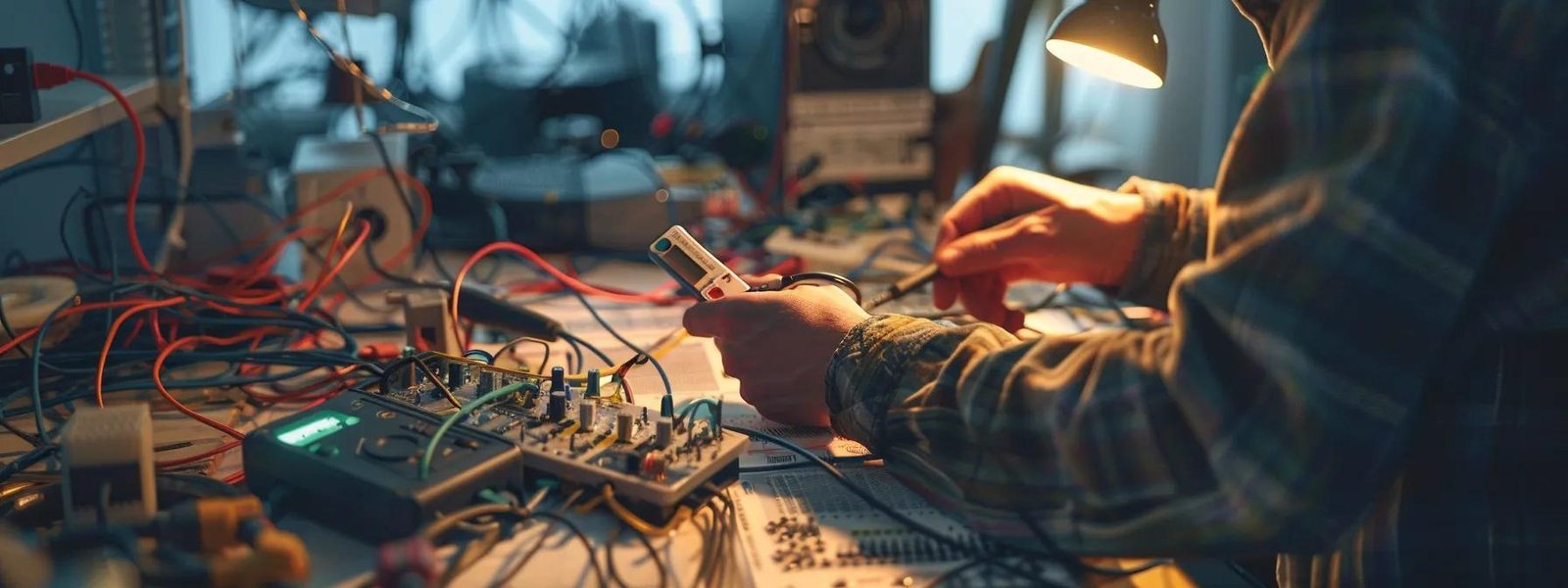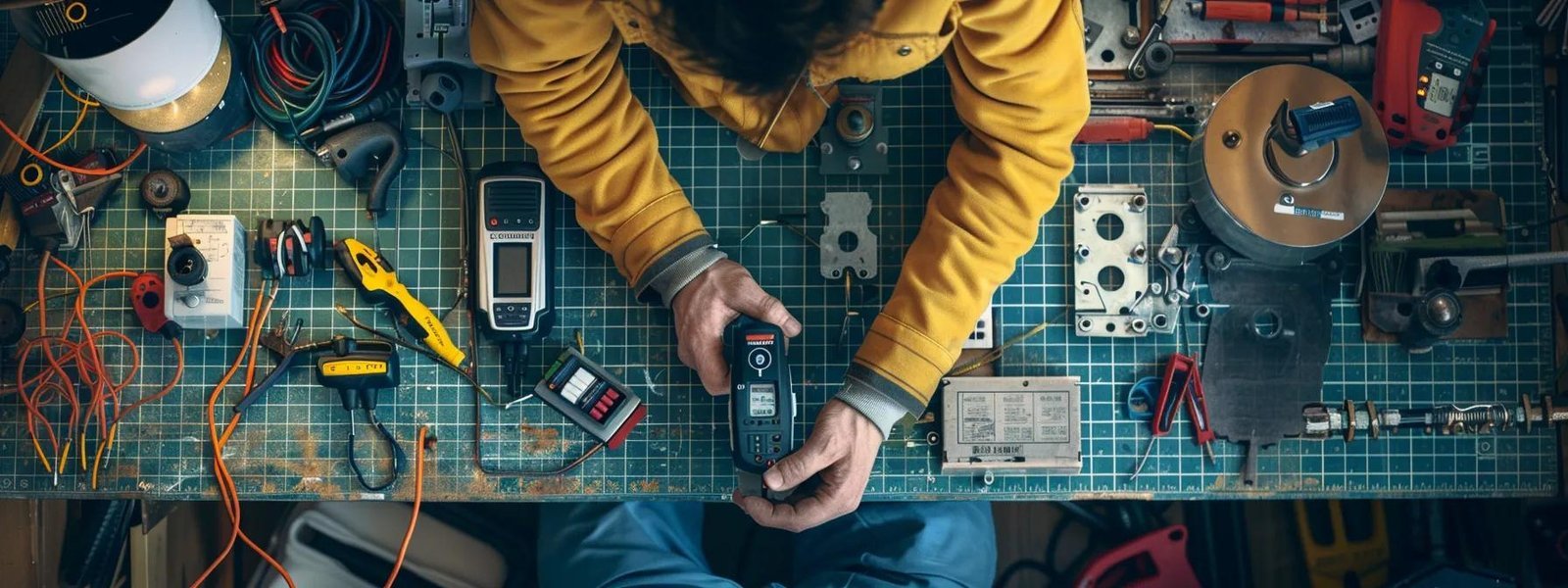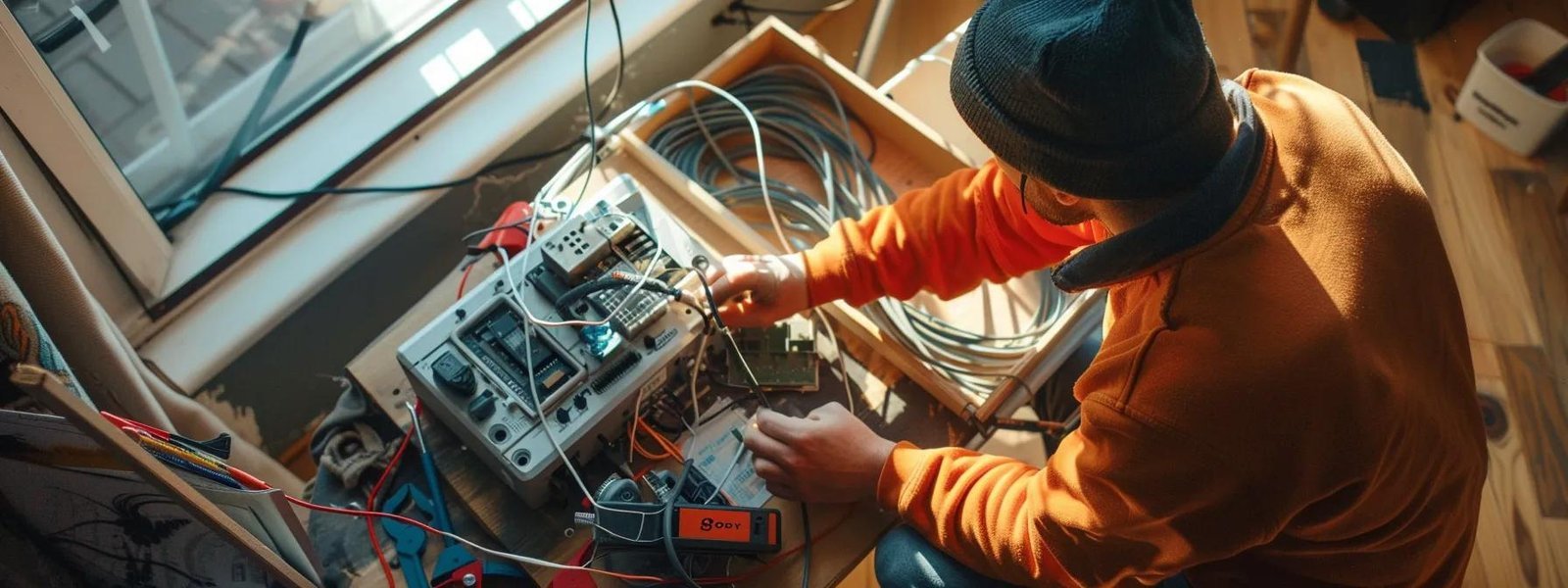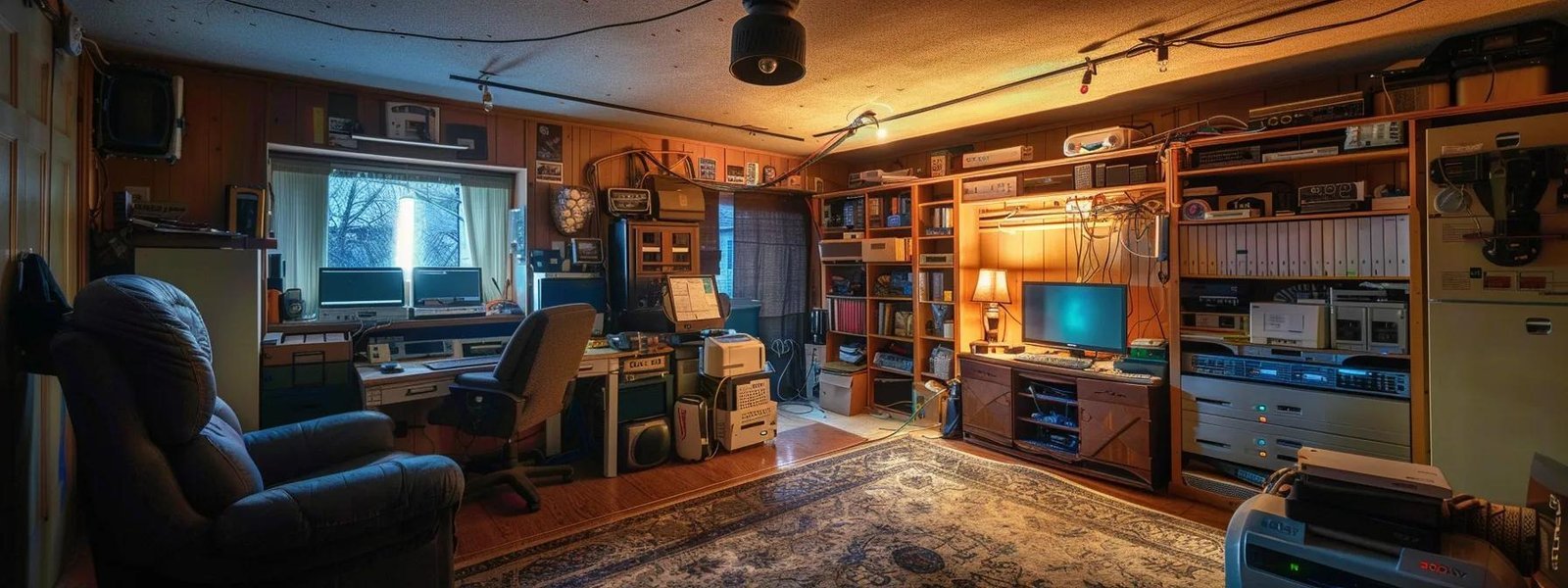
Are you facing issues with your home’s electrical wiring? Many homeowners encounter problems like flickering lights or faulty outlets, which can lead to bigger failures if not addressed. This complete guide to repairing electrical wiring for beginners will cover the fundamentals of electrical diagnostics, common repair techniques, and how to handle specialized wiring repairs. By understanding these key points, readers will gain the confidence to tackle basic electrical panel repair and ensure their home’s electrical system is safe and efficient. This guide aims to empower homeowners to resolve issues and maintain a reliable charging station for their devices.

Understanding the fundamentals of electrical wiring is essential for anyone looking to tackle electrical problems during renovation projects. This section covers basic electrical concepts for beginners, essential tools and equipment, and safety measures to take before starting any work. It also explains how to identify different types of wires and cables and how to read and interpret wiring diagrams, ensuring a thorough inspection of the electrical system and electrical diagnostics.
Basic electrical concepts are crucial for anyone interested in electrical repair. Understanding how electricity flows through wires and the role of different components, such as switches and outlets, can help homeowners identify issues more effectively. For instance, knowing the difference between a live wire and a neutral wire is essential for safe repairs and can significantly enhance customer satisfaction when utilizing repair services or emergency services.
Having the right tools is vital for anyone looking to repair electrical wiring effectively. Essential tools include wire strippers, multimeters, and screwdrivers, which help ensure that electrical solutions are implemented safely and efficiently. By using these tools, customers can manage electrical loads properly and perform necessary electrical services with confidence.
Before starting any electrical work, it is crucial to recognize the signs of potential risks, such as frayed wires or frequent short circuits. Homeowners should always turn off the power at the circuit breaker to prevent accidents during repairs or replacements. Additionally, using insulated tools can further reduce the risk of electrical shock, ensuring a safer environment while addressing home electrical issues.
Identifying different types of wires and cables is crucial for effective troubleshooting and emergency electrical repairs. Homeowners should be familiar with common materials, such as copper, which is widely used for its excellent conductivity. Understanding the specific functions of various wires, like those for power distribution or grounding, can enhance safety and ensure that electrical wiring services are performed correctly, reducing the risk of accidents and improving overall system reliability.
Reading and interpreting wiring diagrams is a vital skill for anyone working with an electrical wiring system. These diagrams provide a visual representation of the electrical system, showing how components like switches, outlets, and air conditioning units are connected. By understanding these diagrams, homeowners can identify electrical issues more effectively, ensuring that repairs are made safely and accurately, especially when dealing with plastic insulation or other materials in their electrical systems.

Preparing for electrical repairs involves several critical steps to ensure safety and efficiency. First, turning off power safely at the circuit breaker is essential to prevent accidents during wiring repair. Next, using a multimeter to test circuits helps confirm that the power is off. Organizing the workspace for efficiency and gathering necessary materials, including replacement parts for fixtures like ceiling fans, further streamlines the process. Lastly, understanding local electrical codes and regulations is vital for compliance and customer service.
Turning off power safely is a critical step when addressing electrical wiring issues in home wiring. Homeowners should locate the main circuit breaker and switch off the appropriate fuse to ensure that no electricity flows to the area being worked on. This knowledge not only protects against electrical shock but also safeguards devices like smoke detectors, allowing for a secure environment while repairs are made.
Using a multimeter to test circuits is a fundamental step in identifying faulty wiring and ensuring safety during electrical repairs. This tool allows homeowners to measure voltage, current, and resistance, helping to pinpoint potential hazards caused by wear and tear on metal components. By regularly checking circuits with a multimeter, homeowners can address issues before they escalate, ultimately saving on repair costs and enhancing the reliability of their electrical systems.
Organizing the workspace is a crucial step for anyone preparing for electrical repairs, such as fixing a light switch or working on a distribution board. A clean and well-arranged area allows for easy access to tools and materials, reducing the risk of accidents and improving efficiency. By ensuring that all necessary equipment is within reach, homeowners can focus on their electrical repair services without unnecessary distractions, leading to a smoother and safer repair process.
Gathering necessary materials and replacement parts is a vital step in preparing for electrical repairs. Homeowners should ensure they have items such as electrical tape, wire connectors, and replacement switches or outlets on hand before starting any project. This preparation not only streamlines the repair process but also minimizes delays, allowing for a more efficient and effective approach to fixing electrical wiring issues.
Understanding local electrical codes and regulations is essential for homeowners preparing for electrical repairs. These codes ensure that all electrical work is performed safely and meets the required standards, reducing the risk of hazards such as electrical fires or shock. Homeowners should familiarize themselves with their local codes, which can vary by region, to ensure compliance and avoid potential fines or issues during inspections.

Homeowners often encounter various electrical problems that require attention. This section covers essential repairs, including fixing loose or damaged outlets, replacing faulty light switches, and repairing broken light fixtures. Additionally, it addresses troubleshooting tripped circuit breakers and resolving flickering or dimming lights. Each topic provides practical insights to help homeowners effectively manage their electrical wiring issues.
Fixing loose or damaged outlets is a common electrical issue that homeowners may encounter. To address this problem, it is important to first turn off the power at the circuit breaker to ensure safety. Once the power is off, homeowners can remove the outlet cover and check for loose connections or damaged wiring. Tightening the screws or replacing the outlet can restore functionality and prevent potential hazards, such as electrical shocks or fire risks. Regularly inspecting outlets can help maintain a safe electrical system in the home.
Replacing faulty light switches is a straightforward task that can significantly improve the functionality of a home’s electrical system. Homeowners should begin by turning off the power at the circuit breaker to ensure safety during the replacement process. After removing the switch cover and unscrewing the faulty switch, they can connect the new switch by matching the wires to their corresponding terminals, ensuring a secure fit to prevent future issues.
Repairing broken light fixtures is a common task that homeowners may face. To begin, it is essential to turn off the power at the circuit breaker to ensure safety. Once the power is off, homeowners can inspect the fixture for loose connections or damaged wiring, which are often the culprits behind malfunctioning lights. By tightening connections or replacing faulty components, homeowners can restore functionality and enhance the safety of their electrical system, preventing potential hazards such as electrical shocks or fire risks.
Troubleshooting tripped circuit breakers is a common task for homeowners facing electrical issues. When a circuit breaker trips, it indicates an overload or a short circuit in the electrical system. To address this, homeowners should first turn off all devices connected to the affected circuit, then reset the breaker by flipping it back to the “on” position. If the breaker trips again, it may be necessary to inspect the wiring or consult a professional electrician to identify and resolve the underlying issue.
Addressing flickering or dimming lights is a common issue that homeowners may encounter, often indicating a problem with the electrical wiring or connections. This issue can arise from loose bulbs, faulty switches, or overloaded circuits. Homeowners should first check the light bulbs to ensure they are securely fitted and functioning properly. If the problem persists, inspecting the wiring connections and circuit load may be necessary to identify and resolve the underlying cause, ensuring a stable and safe electrical system.

Replacing and installing electrical components is a vital skill for homeowners looking to enhance their electrical systems. This section covers essential tasks such as installing new electrical outlets, upgrading to Ground Fault Circuit Interrupters (GFCIs), wiring a new light fixture, adding a dimmer switch, and extending wiring for additional devices. Each topic provides practical insights to ensure safe and effective electrical work.
Installing new electrical outlets is a straightforward process that can significantly enhance a home’s functionality. Homeowners should begin by turning off the power at the circuit breaker to ensure safety. After removing the existing outlet cover and unscrewing the old outlet, they can connect the new outlet by matching the wires to their corresponding terminals, ensuring a secure fit. This simple upgrade not only provides additional power sources but also improves the overall safety of the electrical system, reducing the risk of overloads and potential hazards.
Upgrading to Ground Fault Circuit Interrupters (GFCIs) is a crucial step for homeowners looking to enhance electrical safety in areas prone to moisture, such as kitchens and bathrooms. GFCIs are designed to detect ground faults and cut off power instantly, reducing the risk of electrical shock. By replacing standard outlets with GFCIs, homeowners can protect themselves and their families from potential hazards, ensuring a safer living environment while also complying with local electrical codes.
Wiring a new light fixture is a straightforward task that can enhance the lighting in any room. Homeowners should start by ensuring the power is turned off at the circuit breaker to prevent any electrical hazards. After removing the old fixture, they can connect the new fixture by matching the wires—typically black to black (live), white to white (neutral), and green or bare to the ground wire—ensuring a secure connection for safe operation. This simple upgrade not only improves the home’s aesthetics but also ensures that the electrical system functions efficiently and safely.
Adding a dimmer switch is a practical way to enhance the lighting control in any room, allowing homeowners to adjust brightness levels according to their needs. To begin, it is essential to turn off the power at the circuit breaker to ensure safety during installation. After removing the existing switch, the new dimmer switch can be connected by matching the wires correctly, ensuring a secure fit for optimal performance. This simple upgrade not only improves the ambiance of a space but also contributes to energy efficiency, making it a valuable addition to any home electrical system.
Extending wiring for additional devices is a practical solution for homeowners looking to enhance their electrical system. This process involves adding new wiring to connect devices such as outlets, lights, or appliances, ensuring that the existing electrical load is not exceeded. Homeowners should always turn off the power at the circuit breaker before starting this work and use appropriate gauge wire to match the circuit’s requirements, which helps maintain safety and efficiency in the electrical system.

Specialized wiring repairs require specific knowledge and skills to ensure safety and functionality. This section covers understanding aluminum wiring and its associated risks, repairing damaged extension cords, addressing overloaded circuits, fixing outdoor electrical wiring issues, and handling low-voltage wiring systems. Each topic provides practical insights to help homeowners effectively manage these specialized electrical challenges.
Understanding aluminum wiring is crucial for homeowners, as it presents unique risks compared to copper wiring. Aluminum wiring can be prone to oxidation, which may lead to poor connections and increased fire hazards if not properly maintained. Homeowners should be aware of these risks and consider consulting a professional electrician for inspections or repairs, especially in older homes where aluminum wiring was commonly used.
Repairing damaged extension cords is a straightforward task that can prevent potential hazards in the home. Homeowners should first inspect the cord for visible signs of wear, such as fraying or exposed wires. If damage is found, cutting out the damaged section and using wire connectors to splice the cord back together can restore functionality, ensuring that the extension cord operates safely and effectively for everyday use.
Addressing overloaded circuits is essential for maintaining a safe electrical system in the home. Homeowners should first identify the signs of an overloaded circuit, such as frequently tripped breakers or flickering lights. To resolve this issue, they can redistribute the load by unplugging some devices or using a power strip with built-in surge protection, ensuring that the circuit does not exceed its capacity. If problems persist, consulting a professional electrician is advisable to assess the wiring and make necessary upgrades, enhancing both safety and functionality.
Fixing outdoor electrical wiring issues requires careful attention to safety and proper techniques. Homeowners should first inspect the wiring for any visible damage, such as frayed insulation or exposed wires, which can pose serious hazards. If damage is found, it is essential to replace the affected sections with weather-resistant materials to ensure durability and safety in outdoor conditions. Regular maintenance and inspections can help prevent future problems, ensuring that outdoor electrical systems remain functional and safe:
Handling low-voltage wiring systems requires careful attention to detail and an understanding of the specific applications involved. These systems, often used for landscape lighting, security cameras, and home automation, operate at lower voltages, making them safer to work with but still requiring proper installation techniques. Homeowners should ensure that they use the correct gauge wire and connectors to maintain efficiency and safety in their low-voltage applications:

Maintaining a home’s electrical system is vital for safety and efficiency. Regular inspection tips can help homeowners identify potential hazards early. Preventing common electrical problems ensures a reliable system, while knowing when to consult a professional electrician can save time and money. Upgrading old wiring systems enhances safety, and implementing energy efficiency practices can reduce costs. Each of these topics provides practical insights for effective electrical maintenance.
Regular inspections of a home’s electrical system are essential for ensuring safety and preventing potential hazards. Homeowners should check for signs of wear, such as frayed wires, loose connections, or discoloration around outlets and switches. By conducting these inspections periodically, homeowners can identify issues early, allowing for timely repairs and reducing the risk of electrical fires or shocks.
Preventing common electrical problems is essential for maintaining a safe and efficient home electrical system. Homeowners should regularly inspect outlets, switches, and wiring for signs of wear, such as frayed insulation or loose connections. By addressing these issues promptly and ensuring that circuits are not overloaded, homeowners can significantly reduce the risk of electrical fires and enhance the overall reliability of their electrical systems.
Homeowners should consult a professional electrician when they encounter electrical issues that exceed their skill level or pose safety risks. Signs such as frequent circuit breaker trips, flickering lights, or burning smells indicate underlying problems that require expert assessment. Engaging a qualified electrician ensures that repairs are performed safely and in compliance with local codes, ultimately protecting the home and its occupants from potential hazards.
Upgrading old wiring systems is essential for maintaining a safe and efficient electrical environment in the home. Homeowners should consider replacing outdated wiring, especially in older homes, to prevent hazards such as electrical fires and ensure compliance with current safety standards. By investing in modern wiring solutions, homeowners can enhance the reliability of their electrical systems and accommodate the increasing power demands of today’s devices.
Implementing energy efficiency practices in electrical systems is essential for homeowners looking to reduce utility costs and enhance safety. Simple actions, such as replacing incandescent bulbs with energy-efficient LED lights, can significantly lower energy consumption while providing better lighting. Additionally, using smart power strips and programmable timers helps manage energy use effectively, ensuring that devices are not drawing power when not in use:
Understanding the fundamentals of electrical wiring is crucial for homeowners looking to tackle repairs safely and effectively. By familiarizing themselves with basic concepts, essential tools, and safety measures, individuals can confidently address common electrical issues. Regular inspections and timely upgrades not only enhance safety but also improve the overall efficiency of a home’s electrical system. Empowering oneself with this knowledge ultimately leads to a safer living environment and greater peace of mind.


